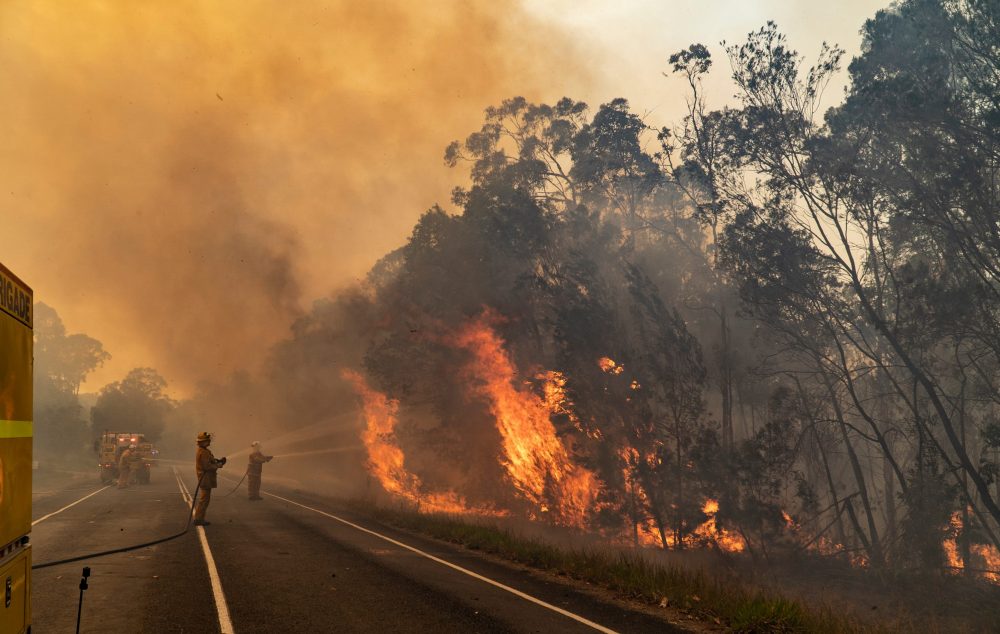Beyond Conformity: Enhancing Property Safety with a Thorough BAL Report Evaluation
Beyond Conformity: Enhancing Property Safety with a Thorough BAL Report Evaluation
Blog Article
Just How BAL Report Impacts Shrub Fire Defense Actions
In the world of bush fire defense, the Building Attack Degree (BAL) record stands as an important tool that significantly influences the safety and security and durability of residential properties in fire-prone locations - BAL Report. The impact of a BAL evaluation expands much past mere documents; it functions as the foundation for identifying the proper building and construction standards and fire protection actions needed to mitigate the dangers posed by bushfires. As communities face increasingly serious fire seasons, recognizing exactly how the BAL report forms these protective actions becomes vital for policymakers, home owners, and home builders alike
Understanding the Bushfire Strike Degree

Value of BAL Report Analysis

Furthermore, the BAL record analysis acts as a fundamental action in adhering to lawful obligations and needs associated with bushfire protection. Neighborhood councils and authorities often mandate the entry of a BAL record as component of the planning and building authorization process to make certain that residential properties are sufficiently secured against bushfire risks. Stopping working to carry out an extensive BAL report evaluation can lead to inadequate protection measures, leaving residential properties susceptible to ravaging bushfire incidents.
Construction Standards Based on BAL
A comprehensive understanding of the Bushfire Attack Level (BAL) allows property proprietors to execute building and construction requirements customized to their particular threat profile. Construction requirements based on BAL are essential in mitigating the influence of bushfires on residential properties. The BAL score categorizes the possible threat a residential visit their website property encounters during a bushfire on a scale from BAL-Low to BAL-FZ (Fire Zone) Each BAL level corresponds to specific building demands outlined in the Australian Standard AS3959-2018 Construction of Buildings in Bushfire-Prone Areas. As an example, residential properties categorized as BAL-Low may only call for fundamental steps such as clearing debris and maintaining yards, while those in higher BAL groups need more robust actions like ember displays, fireproof products, and secured home windows. Abiding by these construction criteria not only improves the structural strength of the building but also enhances the overall safety of homeowners throughout a bushfire event. Residential property owners need to very carefully consider their BAL score and abide with the equivalent building and construction requirements to adequately guard their residents and homes.
Carrying Out Fire Security Steps
With the foundation of construction requirements based upon Bushfire Strike Level (BAL) in position, the focus now changes towards the functional implementation of fire security measures to fortify properties against bushfire hazards. Carrying out fire defense measures includes a combination of passive and active methods to enhance the durability of structures in bushfire-prone areas. Passive measures include making use of fire-resistant building materials, setting up ash guards on vents, securing spaces in wall surfaces and roof coverings, and maintaining a clear area around the building without flammable plant life. Energetic procedures incorporate having firefighting devices readily available, such as pipes and water pumps, along with producing a defendable area around the residential or commercial property by clearing vegetation and having a well-kept yard. Furthermore, creating a discharge strategy and guaranteeing all citizens are conscious of emergency situation procedures are important elements of efficient fire security actions. By incorporating both passive and energetic strategies, residential properties can substantially reduce their susceptability to bushfire incidents and boost the security of occupants.
Safeguarding Homes Against Bushfires
Efficiently protecting homes against the devastating influences of bushfires needs a thorough and proactive technique to fire security actions. Additionally, securing vents and gaps to protect against cinder invasion, as well as integrating fire-resistant doors and windows, can help strengthen the home's defense against bushfires. By visit our website embracing a proactive position and incorporating these protective steps, house owners can dramatically increase their opportunities of guarding their homes against bushfires.
Verdict
In final thought, the Bushfire Assault Degree (BAL) report plays an important duty in figuring out the required protection actions versus bushfires. Executing fire security procedures based on the BAL report is necessary in protecting buildings from possible bushfire dangers.
In assessing bushfire risk to buildings, understanding the Bushfire Attack Level (BAL) is an visit our website important part for implementing efficient protection measures. On the whole, a clear understanding of the Bushfire Assault Degree is vital for executing ample security procedures and alleviating the effect of bushfires on properties.

Report this page